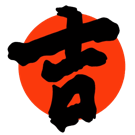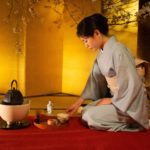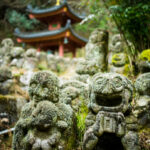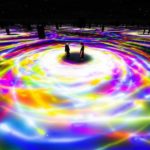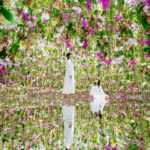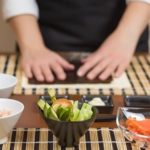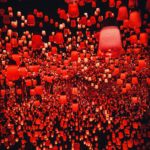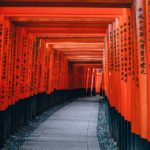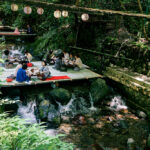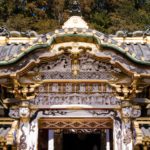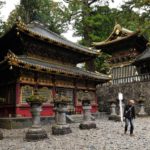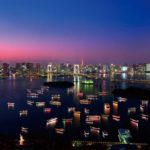Day 1 (11/14): Tokyo
Flight arriving in Japan on this day (flight arrives at 5:30PM), no activities planned.
Activities:
- n/a
Planner's Notes: n/a.
Day 2 (11/15): Tokyo
This day is mostly dedicated to the Tokyo traditional matsuri known as Tori no Ichi. There are thousands of matsuri events in Japan throughout the year. Some of them are based on historic events, some of them are dedicated to Shinto spirits or deities, and some are based on local legends or folk tales. The matsuri landscape is extremely rich, and is a good way to connect with the local culture, so I wanted to include at least one in your itinerary. The video below gives you a good insight into what this particular matsuri is like.
I'd like to also use this day to organize a trip to Japan's largest fish market, Toyosu for an early morning visit with a chef who can walk you through fish selection processes, what they pair best with, and what types of fish are typically used for which dishes in Japan. In addition to this, I know that you mentioned that you aren't necessarily interested in cooking lessons, but I'd like to arrange a Japanese culinary etiquette lesson since food is indeed a strong theme for this trip.
Art was something that we briefly discussed during our phone call, and it isn't something that was a major theme that we took into consideration when crafting this itinerary, however I did want to include at least one experience. Thus I've tentatively put in one of TeamLab's experiences. These experiences are quite difficult to describe, so please refer to the video below to get an idea of what it is like.
Activities:
- Tori no ichi Matsuri
- Toyosu Early morning fish market tour
- Japanese culinary basics (miso and koji) + etiquette lesson
- TeamLab Borderless
Planner's Notes: This day and the previous one are relatively long days, and so for both of these days, I would like to utilize a private driver. This will also make it easier for your guide to make side stops along the way.
Day 3 (11/16): Tokyo / Nikko
Today, as an almost complete turn from yesterday's activities, the theme and focus will be on parts of Japan's past. Nikko is the resting place for the shogun who unified Japan. There is a shrine there in his honor, and it by far the most ornate of any shrine I've seen in the country. The first half of this day is best spent with a knowledgeable guide who can give you all of the history of Nikko, and the shrines so that you can best appreciate it. The shrine itself is planted right in the middle of a large cedar forest, which only adds to its majesty.
After that, the next stop is more lighthearted. The Edo-era "theme park" isn't located too far from the shrine. I love visiting here, and they usually have to kick us out, because we typically stay until closing hours. There is so much to do, see and learn while visiting. There are impromptu sword fights, hidden ninjas in the streets, areas that teach you about the crafting process of katanas (it is insanely complex), and even stations where you can try your hand at creating your own daruma dolls. It is a lot of light-hearted fun, but I can definitely understand if it isn't exactly what you're looking for with this itinerary. Please let me know what you think about it, and we can replace this with something else (Nikko has some onsen spots nearby that we could put into this day).
As transportation in the area can be very complicated, we would like to arrange a private car for you and your guide on this day (to travel around Nikko to save time as public transport times are irregular).
This day is largely dedicated to nature. There will be a couple of hikes in this itinerary, but Nikko is known for its beautiful momiji during autumn, so we've planned a hike in this area as your first momiji experience.
Activities (guided):
- Visit to Toshogu Shrine (guided)
- Hike to Kegon Waterfall
- Private Onsen visit after the hike
- Dinner Reservation: TBD
Planner's Notes: Toshogu Shrine is indeed a shrine, but it isn't like any other shrine in Japan. I know that people can easily get tired of shrine/temple visits when visiting Japan, but if I could only plan a single shrine/temple visit, it would definitely be this one. Private car is an a must on this day.
Day 4 (11/17): Takayama / Shirakawa-go
Takayama and Shirakawa-go will be a stop between the first leg in Tokyo and your time spent in Kyoto. Takayama is a smaller town in Gifu, that is famous for its semiannual matsuri event that has been designated as a UNESCO World Heritage Asset. Although it will have ended before you arrive in Japan, there will still be a chance to see the floats at the museum in the area.
Food-wise, Takayama is known for its beef, and sake. Visiting one of the breweries in this region for small-batch fresh sake would be a good experience. Please note that travel to Takayama will be relatively long on this day, hence the short list of activities planned for it.
Activities:
- Sake brewery visit
- Hidatakayama Matsuri no Mori (Matsuri Museum)
Planner's Notes: The accommodation here in this region will be an entire house with an open-air private bath.
Day 5 (11/18): Shirakawa-go
Tentatively adding Shirakawa-go to this part of the trip.
Activities:
- Morning Market visit (in Takyama before departing to Shirakawa-go)
- Ogimachi (gassho-zukuri style house village) visit
Planner's Notes: Definitely would like for you guys to have a guide on this day. It would be nice actually to have a car as well, as it would save time, and also allow you to visit more places in this region while here.
Day 6 (11/19): Kyoto
I'd like to keep the experiences on this day simple, as it is a relatively long travel day, and it will be a good opportunity to recover from the slightly packed days in Tokyo.
For the tea ceremony, we can arrange a very traditional one with a monk, or we can arrange for a tea ceremony that is slightly more modern in a space with a tea ceremony master that has embraced a few more modern enrichments. Both are great experiences. I'd like for you to have a guide with you during this day to introduce you to the different neighborhoods in Kyoto, with a focus on the areas around the Kamogawa river which are lined with amazing restaurants, bars and teahouses.
Activities:
- Dinner with geisha
- Tea ceremony
Planner's Notes: This day has intentionally been left relatively open, as the bullet train from Tokyo will take around 2.5 hours.
Day 7 (11/20): Himeji
Some of the days on this trip, you guys will be accompanied by a guide, but today is one of the days where it is most important. I'd like to start the day with a visit to Himeji Castle. A proper guide makes the experience all the more special, as knowing the history of the castle helps you understand why it was chosen as a UNESCO World Heritage Site. Himeji Castle's nickname is the White Heron, as from afar the silhouette of the castle resembles the large bird.
The castle has a garden section as well which is nice to walk through, because it is made on the land that used to be the castle town grounds. There really is no other castle in Japan that has maintained the grounds and main castle itself as well as Himeji has. There's no comparison anywhere else in the country. Visiting here truly does give you an idea of not only what it was like to live during that time, but also a glimpse at Japanese warfare and ingenuity during that period.
Activities:
- Lunch experience with Kaiseki chef (suggestion)
- Himeji Castle visit
- Sake brewery visit
Planner's Notes:
Himeji Castle is by far the most majestic in the country, and also the most well-maintained. It is something that we could look at doing in the morning to replace the culinary experience, but it would make the day very long.
Day 8 (11/21): Kyoto / Kurama
When we spoke on the phone you mentioned that you and your wife are quite active, and so I wanted to make sure that I've planned multiple "active" experiences for this itinerary. I think that Kurama is a perfect location as it isn't too far from Kyoto, and the paths include mountains, rivers, shrines, and a small village where you guys can have lunch. In total, the hike would be round 4 hours.
The place that I would like to suggest for lunch after the hike, is called Hiroya. It's technically a small ryokan, however the meals here are very traditional Kyoto-style 'banzai' course meals. I'm going to include a link to their menu to give you an idea of what it's like:
https://kibune-hiroya.com/cuisine/
Activities:
- Mt. Kurama area hike (w/a guide)
- Hiroya lunch (as a suggestion)
- Dinner reservation: Isshinya
Planner's Notes: This day is left relatively 'bare' intentionally, so that I can move and arrange things from the previous day on to this day if necessary. The 'main' experience is the hike around the Kurama mountain region.
Day 9 (11/22): Kyoto
Nara is Japan's ancient capital before Kyoto and Tokyo. Todaiji Temple is one of Japan's icons, and the deer that roam the temple grounds freely are one of the elements of this temple that have made it famous.
Activities:
- Todaiji Temple visit
- Dinner Reservation: TBD (Possibly Danchu)
Planner's Notes: This will be one of the longest travel days in the itinerary (3+ hours in total), so I would like to keep the planned activities to a relative minimum, especially considering that getting to Nara will take some time in and of itself.
Day 10 (11/23): Hakata
Today will be dedicated to the sumo tournament in Hakata, just south of Hiroshima in Kyushu. Initially I wanted to arrange a visit to a sumo stable however as the tournament will be happening, most of the rikishi wrestlers will be unavailable since they will be participating in the tournament. This day is also the 2nd to last day of the tournament, and so it is going to be a lot of tension in the air, and excitement.
Activities:
- National Sumo tournament
- Dinner Reservation: TBD (Possibly Danchu)
Planner's Notes: This will be one of the longest travel days in the itinerary (3+ hours in total), so I would like to keep the planned activities to a relative minimum. This day can be used as a day to spread other regions' experiences out more for a more relaxed pace, if you aren't particularly interested in visiting the sumo tournament. Updated information: I think that the best way to handle this day logistically is to first stop in Hiroshima to leave your luggage and then head down to Hakata (if we are going to cancel the 2nd day in Hakata).
Day 11 (11/24): Hakata or Nakasendo Trail
Hakata additional day, activities/experiences to be finalized later on after consultation.
Planner's Notes: I'd like for you to consider moving this day to the Chubu area around Nagoya before your trip to the Takayama/Shirakawa-go area. I'm specifically thinking of the Nakasendo Trail in that area (around Magome) for a walk the the small postal towns/villages. I think that this would be a good 'replacement' for the Shimanami Kaido biking day that we originally had in the itinerary.
If you were to choose the Nakasendo trail instead of the an extra day in Hakata we would be able to customize the route that you and your wife hike, based on what you can handle (anywhere between ~15km - 45km). We could also customize the route based on whether you want to focus on a more nature-based route, or more rural/small town landscapes and settings. This route is a very historically important route. During the Edo era, the lords of different regions in Japan were forced to make a 'pilgrimage' to Tokyo, and so many 'post' towns sprung up along that path and a lot of them have been very well preserved to this day. I think that this would be an excellent addition to the itinerary as it will also fit into the itinerary very well with Shirakawa-go. This would mean that the trip to Hakata would only be for the sumo tournament, and so it wouldn't be necessary to stay the night in Hakata, and you could check in to your hotel in Hiroshima after the tournament, which would also be better logistically.
Note: The hike on Day 8 will be a bit more 'nature' focused with stops at shrines, and small towns, however the landscape, sights and stops will be quite different, so I don't think that there is overlap between these two. Also, the hike on Day 8 should have a bit more Autumn momiji along the route.
Day 12 (11/25): Hiroshima
I've broken the activities in the Hiroshima area into two main locations; Miyajima and Hiroshima proper. This day will be dedicated to Miyajima or as it is sometimes called, Itsukushima. Itsukushima has a very fascinating history and also 'place' within the Shinto belief system as the island in and of itself was seen as a god in the Shinto pantheon. I'd like to start this day early with a morning kayaking course while the tide is high that will allow you both to pass through the torii gates that are outside of Itsukushima Shrine. These large vermillion-colored gates have been made famous by being designated a UNESCO World Heritage Site.
Although it isn't a direct activity per se, I would like to plan with your guide the routes that you will take to climb Mt. Misen on this day to include some of the areas on the island that are famous for their momiji Autumn foliage. Miyajima has the most brilliant, and vibrantly red-colored foliage of any location I've seen in my entire time spent in Japan. It isn't a close competition either. The foliage doesn't look 'real'.
Activities:
- Early morning Miyajima Island kayaking
- Miyajima Island visit
- Short hike of Mt. Misen (maybe 45 minutes)
- Daihouji Temple
- Itsukushima Shrine
- Enjoying Momiji on Miyajima Island
- Dinner arrangements: TBD
Planner's Notes: Previous plan notes:
Day 13 (11/26): Hiroshima
As far as food goes, for lunch I'd like to send you to an okonomiyaki restaurant. Okonomiyaki is done in a unique way in Hiroshima, so it's totally different from the way you may have it on the food tour in Osaka. There is a place that is in central Hiroshima called Okonomimura, which means village of okonomiyaki, and it is essentially a 5-story building where every single restaurant inside is a teppan-style spot that has their own take on the dish. For dinner, I would like to either arrange for something more adventurous (cow's tongue is a delicacy that can be had in this region), or a food tour of the city, before you guys return to Osaka for the night.
Shukkeien Garden was originally designed in 1620 by a renowned tea ceremony master, as a villa garden for Asano Nagaakira, a feudal lord of Hiroshima. It is a domestically famous garden, and I think it will be a good addition since there are no experiences in the itinerary like it at the moment.
Activities:
- Hiroshima day trip
- Peace Memorial Park and Museum
- A-Bomb Dome
- Okonomimura for lunch
- Shukkeien Garden
- Food tour for dinner
Planner's Notes: Miyajima is one of those rare places that have deer roaming the streets (kind of like Nara). Deer in Shintoism are seen as messengers for the gods, so when in sacred places they are not harmed or pushed away. The hike is short, but as there have been quite a few physical activities in the last few days, if you wish, you can take a ropeway to the top of Mt. Misen instead of hiking it.
Day 14 (11/27): Tokyo
For this day, I've tried to keep the activities relatively short, and simple since it is your first day in Japan, and I'm not 100% sure when you will arrive. The eastern side of Tokyo is much more "traditional" than the western side of the city. One of the neighborhoods that best exemplifies this is Asakusa, which houses one of Tokyo's most iconic temples, Sensouji. Sensouji is a relatively large temple, that also happens to have a shrine on its grounds.
This day is meant to be an "introduction" to Tokyo, which is why Tokyo SkyTree is included in the itinerary as it is the best possible way to get an idea of how incredibly expansive the cityscape of Tokyo is.
Activities:
- Sake taste testing
- Ueno Izakaya food tour
- Sensouji + Asakusa tour
- Tokyo SkyTree
Planner's Notes: Depending on your arrival time, we can look at spreading these activities throughout the other days that you will be in Tokyo.
Day 15 (11/28): Tokyo
Flight departing Japan on this day, however, I've tentatively added Sanrio Puroland in on this day per your suggestion.
Activities:
- Sanrio Puroland
Planner's Notes: Please note that it takes a while to get to the theme park from Tokyo (roughly 1.5-2 hours by train). Also, because the park only opens at 9:30, the time that you guys have there would be quite limited. My suggestion for this day is to have a private car that can take you to the theme park when they open, and then take you directly to the airport to maximize time, and also so that you don't have to worry about going back into Tokyo to get your luggage before departing. This will also be nice if you guys would like to have any additional stops for meals along the way. Please not that this addition is not currently added on to the invoice.
